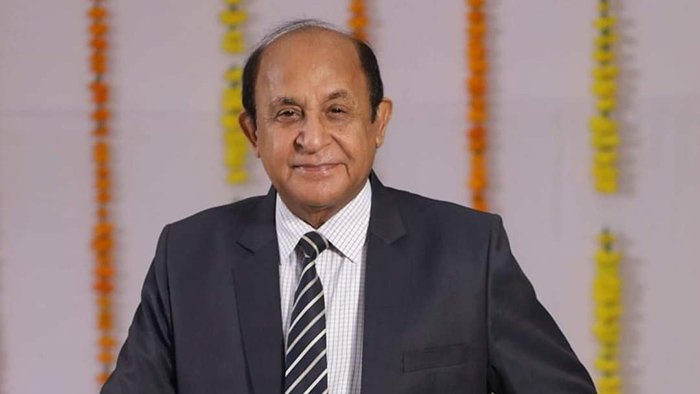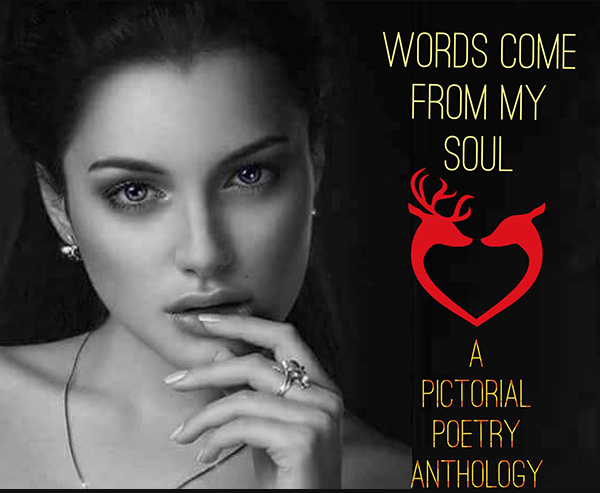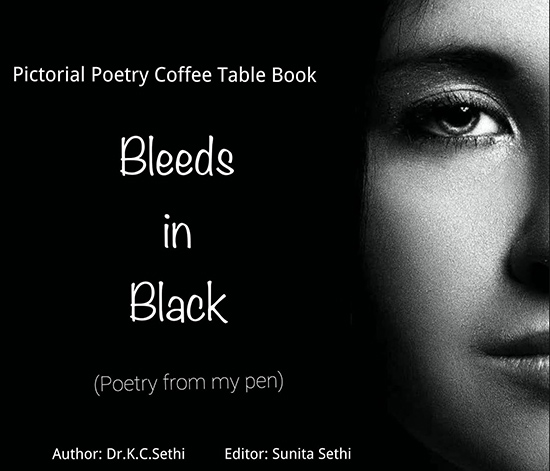Le innovazioni di Krishan Chand Sethi nella poesia, nell’arte e letteratura

di Goffredo Palmerini
L’AQUILA – Ho incontrato Krishan Chand Sethi nel 2018, in Salento. Era venuto in Italia per un evento artistico-letterario a Galatone, città a 27 chilometri da Lecce. Fui subito affascinato dalla sua arte fotografica e dalla sua poesia, distillata in versi brevi e intensi. La sua fotografia e i suoi versi, in una sinestesia altamente suggestiva, li ho poi visti “dal vivo” in alcuni preziosi coffee table books che Sethi aveva portato con sé per il Premio di Arte Sacra e Poesia organizzato dall’associazione internazionale Verbumlandiart. In quell’occasione gli fu conferita una Targa d’Argento in riconoscimento del suo contributo a lungo termine alla Cultura e alla Letteratura.
Fu in tale occasione che scoprii la “poesia pittorica”, di cui Sethi è l’inventore e pioniere, avendola introdotta in India, dove è nato, e diffusa in tutto il mondo attraverso il World Pictorial Poetry and Art Forum©, un’istituzione culturale e letteraria. da lui fondata, che opera attraverso una rete di rappresentanze in 33 paesi. Si tratta quindi di una nuova e originale forma di espressione artistica e letteraria di Krishan Chand Sethi, mediante la quale promuove globalmente valori di Pace, Amore e Umanità, attraverso l’Arte e la Poesia. E pensare che Sethi aveva esperienze molto diverse prima di incrociare la poesia e la fotografia d’arte, sbocciate alcuni anni dopo l’inizio di questo secolo.

Una cover d’Antologia di Poesia pittorica
Il dr. Krishan Chand Sethi, 72 anni, è nato in Punjab, regione dell’estremo nord dell’India al confine con il Pakistan. Con due lauree e un master (in Letteratura Inglese, Scienze Assicurative e D.O.O.P, PG Diploma da tre diverse Università indiane), Sethi ha lavorato per 35 anni come dirigente in United India Insurance Co. Ltd fino al 2012. Poeta raffinato, scrittore e fotografo d’arte, ha pubblicato 75 volumi di poesia pittorica e antologie in grandi album da tavolo. La sua produzione artistico-letteraria comprende oltre 500 poesie pittoriche e altrettanti poemi brevi e micro-poemi. Sethi è considerato un poeta popolare. I suoi soggetti sono semplici, belli e chiari, inquadrati nella sua poesia pittorica.
Sethi è un vero precursore, innovando e introducendo il concetto di poesia pittorica, dove la fotografia e la poesia si fondono in un’unione espressiva efficace. Il linguaggio corporeo dei soggetti e degli oggetti coinvolti nell’immagine è sempre abbinato al tema di una poesia. Questo modo di scrivere testi sta rapidamente diffondendosi nel mondo della poesia e dei social media, proprio attraverso il World Pictorial Poetry Art Forum©, di cui Sethi Krishan Chand è presidente e fondatore, un’associazione culturale e umanitaria che mira a promuovere valori universali di fraternità umana e pace in tutto il mondo attraverso la letteratura e l’arte. Il Forum, con le sue 33 filiali in tutto il mondo e una sulla Luna, dopo l’atterraggio dell’India sul nostro satellite, ha la sua sede principale in India, a Daman, una splendida città sull’oceano situata a 180 km da Mumbai.
“Il concetto di poesia pittorica che ho progettato e diffuso – mi confidò Sethi qualche tempo fa, “mi ha reso molto conosciuto a livello mondiale. Tutto è iniziato nel 2011 quando ho scritto un verso di quattro righe su una fotografia di mia madre per segnare un grande ricordo. Mi ha toccato il cuore, e ho iniziato a lavorare su questa idea innovativa, modellata per essere il futuro della nuova poesia con la fotografia. All’inizio ha funzionato lentamente, ma dal 2014 è in pieno svolgimento. Ora si sta espandendo in modo straordinario sui social network e sui media cartacei.” Nei suoi lavori, sembra che l’immagine e la poesia operino come il corpo e l’anima di una composizione e abbiano un doppio effetto sulla mente dei lettori.
Vorrei ora approfondire il lavoro letterario di K.C. Sethi, che di recente ha creato la sua “Scuola di Poesia” e ne ha evidenziato i principali aspetti innovativi con dettagliati articoli di stampa e comunicazioni sui social media. Studiare le innovazioni del dr. Sethi e l’introduzione di nuovi concetti e generi nel campo della letteratura poetica ha generato molto interesse e stupore. È un vero genio, avendo originato e contribuito a innovazioni uniche nella letteratura e nell’arte. È davvero un piacere seguire il suo pensiero sulla “poesia in un’unica frase” o “poesia a punto fermo“, insieme alla già affermata poesia pittorica e alla poesia sensoriale/emotiva.
**Poesia in una singola frase o Poesia a punto fermo: Innovazioni nel mondo letterario**
La Poesia in una Singola Frase o Poesia a Punto Fermo, la Poesia Pittorica e la Poesia Sensoriale sono forme espressive innovative introdotte dal dr. Sethi, ciascuna delle quali esprime la profondità delle emozioni umane, del pensiero e della creatività. Queste innovazioni infrangono tutte le strutture tradizionali e invitano i lettori a sperimentare la poesia sia come stimolazione intellettuale sia come risonanza emotiva.
**L’essenza e l’innovazione della poesia a punto fermo**
Una delle forme più uniche di poesia è la Poesia in una Singola Frase o a Punto Fermo, che utilizza un flusso continuo di pensieri, punteggiato solo da virgole, punti e virgola, congiunzioni e verbi ausiliari, fino a concludersi con un unico punto fermo finale. Imita, in un certo senso, l’approccio della mente umana ai pensieri e alle emozioni, trascinando il lettore senza interruzioni o pause. Sethi ha abilmente utilizzato questa forma per comporre poesie profondamente riflessive e cariche di emozioni, sviluppando spesso temi sull’amore, la vita e la riflessione, attraverso una struttura di frase continua che coinvolge il lettore in un’esperienza meditativa. Ad esempio:
-
L’amore, come un dolce vento che soffia tra gli alberi, portando con sé i fiori.
-
La dolcezza e il calore del sole intessono ricordi destinati a durare, mai detti ma profondamente sentiti nel cuore; mai svaniti, ma con il tempo sempre più costanti.
Poesia in una singola frase:
-
La vita, una serie di momenti, fugaci eppure profondi, ciascuno un passo nel viaggio, con risate, lacrime, speranze e sogni tutti mescolati insieme come fili di un arazzo, scrivendo una storia unicamente nostra, una storia che continua a dispiegarsi e a dispiegarsi finché non troviamo la nostra pace.
Questi semplici esempi suggeriti dal dr. Sethi illustrano come la Poesia a Punto Fermo stimoli un costante reimpegno con il racconto poetico e la poesia per produrre una forte conclusione riflessiva.
La precisione e l’impatto della poesia in una singola frase
La Poesia in una Singola Frase è un’altra innovazione che ha ulteriormente affinato il potere della brevità e della precisione. Questa forma tenta di distillare la Poesia in Prosa in un’idea, espressa in una singola frase che colpisce emotivamente o intellettualmente. La chiarezza e i momenti di intuizione sono meglio catturati attraverso questo mezzo, perdurando a lungo dopo la fine della poesia. Storicamente collocata nel movimento della “poesia in prosa” del XIX secolo, la Poesia in una Singola Frase si allinea con tradizioni minimaliste come gli haiku o gli aforismi, dove ogni singola parola è stata accuratamente scelta per dare vita al testo. Ecco alcuni semplici esempi del lavoro di dr. Sethi in questa forma:
-
Nel silenzio dell’alba, la speranza sorge con il sole.
-
Un sorriso nasconde mille storie non raccontate.
-
L’amore inizia dove le parole finiscono.
-
Sotto le stelle, siamo tutti sognatori.
-
Il tempo sussurra, ma il suo messaggio è forte.
Conclusioni: Unione di Forma e Significato. I contributi del dr. Sethi in campo letterario hanno aperto nuove vie nell’espressione poetica, fondendo forma e significato nei modi più innovativi. Le strutture tradizionali vengono messe in discussione e nascono nuove possibilità con tecniche narrative innovative che espandono il potenziale di ciò che la poesia può raggiungere. In questo modo, sia la “poesia a frase unica” che la “poesia a punto fermo”, così come la “poesia pittorica” e la “poesia sensoriale”, aiutano poeti e lettori a riavvicinarsi al linguaggio e al significato.

Uno dei libri da tavolo del dr. Sethi
Queste forme non solo mettono in evidenza quanto la poesia sia versatile come genere letterario, ma dimostrano anche la sua capacità senza tempo di esprimere l’aspetto più complesso della vita: quello di essere e di esprimere l’umanità. Il lavoro di Sethi continua ad ispirare ed evolversi, portando la poesia a nuovi livelli di comprensione e esperienza. Le sue innovazioni rappresentano un invito per i poeti di tutto il mondo a esplorare oltre i confini tradizionali, cercando sempre nuovi modi di connettersi profondamente con i lettori. Un invito ad esplorare i confini dell’immaginazione e dell’emozione, rendendo la poesia non solo un’arte, ma una filosofia viva che interseca i confini del tempo e della cultura.
THE INNOVATIONS OF DR. DR. SETHI KRISHAN CHAND IN POETRY, ART, AND LITERATURE
by Goffredo Palmerini
L’AQUILA’ ITALY : I met Krishan Chand Sethi in 2018, in Salento. He had come to Italy for an artistic-literary event in the city of Galatone, about twenty kilometers from Lecce. I was immediately intrigued by his photographic art and his poetry, distilled in short and intense verses. His photography and his verses, in a highly appealing synaesthesia, I then saw “in real life” revealed in some precious coffee table books that Sethi had brought with him for the Sacred Art and Poetry Award organized by the international association Verbumlandiart. At that event, he was awarded a Silver Plaque in recognition of his lifetime contribution to Culture & literature.
It was on this occasion that I discovered “pictorial poetry,” of which Sethi is the inventor and pioneer, having introduced it in India, where he was born, and spread it worldwide, through the World Pictorial Poetry and Art Forum©, a cultural and literary institution he founded, which operates through a network of representations in 33 countries. Thus, a new and original form of artistic and literary expression by Krishan Chand Sethi, through which he promotes values of Peace, Love, and Humanity globally, through Art and Poetry. And to think that Sethi had very different experiences before intersecting with poetry and art photography, which blossomed a few years after the start of this century.
Dr. Krishan Chand Sethi, 72 years old, was born in Punjab, a region in the far north of India bordering Pakistan. Holding two degrees , and a master’s (in English Literature, Insurance Sciences and D.O.O.P, PG Diploma from three different Indian universities, Sethi worked for 35 years as a manager in United India Insurance Co. Ltd until 2012. A refined poet, writer, and art photographer, he has published 75 volumes of pictorial poetry and and anthologies in large coffee table albums. His artistic-literary production includes over 500 pictorial poems and as many short and micro-poems. Sethi is considered a popular poet. His subjects are simple, beautiful, and clear, framed in his pictorial poetry.
He is a true forerunner, innovating and introducing the concept of pictorial poetry, where photography and poetry merge into an effective expressive union. The body language of subjects and objects involved in the image is always paired with the theme of a poem. This way of writing lyrics is rapidly spreading in the world of poetry and social media, precisely through the World Pictorial Poetry Art Forum ©, of which Sethi Krishan Chand is the president and founder,a cultural and humanitarian association aiming to promote universal values, Love, Peace & Humanity worldwide through literature and art. The Forum, with its 33 branches worldwide & one at the moon, after India’s landing over there and t m has its headquarters in India, at Daman, a beautiful city on the ocean, located 180 km from Mumbai.
“The concept of pictorial poetry that he designed and disseminated, ” Sethi confided to me some time ago, and says ” It has made me very well known worldwide. It all began in 2011 when I wrote four line verse about a photograph of my mother to mark a great memory. It touched my heart, and I started working on this innovative idea, shaped to be the future of new poetry with photography. It worked slowly at first, but since 2014 it has been in full swing. Now it is expanding extraordinarily on social networks and print media.” In his works, it seems that image and poetry operate like the body and soul of a composition and have a dual effect on readers’ minds”.
I would now like to delve deeper into K.C. Sethi’s literary work, who recently created his “School of Poetry” and highlighted its main innovative aspects with detailed press articles and social media communications. Studying Dr. Sethi’s innovations and the introduction of new concepts and genres in the field of poetic literature, has generated much interest and amazement. He is a true genius, having originated and contributed to unique innovations in literature and art. It is indeed a pleasure to follow his thinking on “single-sentence poetry” or “full-stop poetry,” along with the already well-established pictorial and Feel/sensory poetry.
Single-Sentence Poetry or Full-Stop Poetry: Innovations in the Literary World
Single-Sentence Poetry or Full-Stop Poetry, Pictorial Poetry, and Sensory Poetry are innovative expressive forms introduced by Dr. Sethi, each of which expresses the depth of human emotions, thought, and creativity. These innovations break all traditional structures and invite readers to experience poetry as both intellectual stimulation and emotional resonance.
The Essence and Innovation of Full-Stop Poetry
One of the most unique forms of poetry is Single Sentence or Full-Stop Poetry, which uses a continuous flow of thoughts, punctuated only by commas, semicolons, conjunctions, and auxiliary verbs, until concluding with a single final full stop. Mimicking, in a sense, the human mind’s approach to thoughts and emotions, it drags the reader without interruptions or pauses. Sethi has skillfully used this form to compose deeply reflective and emotion-laden poems, often developing themes about love, life, and reflection, through a continuous sentence structure that engages the reader in a meditative experience. For example:
– Love, like a sweet wind blowing through the trees, carrying flowers with it.
– The sweetness and warmth of the sun wove memories meant to last, never spoken but deeply felt in the heart; never faded, but with time, ever more constant.
Single-Sentence Poetry:
Life, a series of moments, fleeting yet profound, each a step in the journey, with laughter, tears, hopes, and dreams all mingled together like threads of a tapestry, writing a story uniquely ours, a story that continues to unfold and unfold until we find our peace.
These simple examples suggested by Dr. Sethi illustrate how Full-Stop Poetry stimulates a constant re-engagement with poetic storytelling and poetry to produce a strong reflective conclusion.
The Precision and Impact of Single-Sentence Poetry
Single-Sentence Poetry is another innovation that has further refined the power of brevity and precision. This form attempts to distil Prose Poetry into an idea, expressed in a single sentence that hits emotionally or intellectually. Clarity and moments of insight are best captured through this medium, lingering long after the poem’s end. Historically placed in the 19th-century “prose poetry” movement, Single-Sentence Poetry aligns with minimalist traditions like haiku or aphorisms, where every single word has been carefully chosen to bring the text to life. Here are some simple examples of Dr. Sethi’s work in this form:
– In the stillness of dawn, hope rises with the sun.
– A smile hides a thousand untold stories.
– Love begins where words end.
– Under the stars, we are all dreamers.
– Time whispers, but its message is strong.
These single-line poems contain universes of meaning within them, demonstrating that even the simplest forms can hold great depths.
Pictorial Poetry and Feel/ Sensory Poetry
In addition to Full-Stop Poetry and Single-Sentence Poetry, Dr. Sethi has further enriched the world of literature with the discovery of Pictorial Poetry and Sensory Poetry, which have revolutionized the perception and experience of poetry.
Pictorial Poetry is a form that combines the refinement of visible arts with poetic expression. Introduced by Dr. Sethi, this innovation played a significant role in 2011, with the current trend of combining poems with illustrative images, paintings, sketches, and drawings on social media. Pictorial Poetry can have a double effect on readers, simultaneously activating the visible and literary senses. The form has expanded beyond traditional poetry, making it more accessible and attractive to a broader audience, especially in the digital age.
Feel/Sensory Poetry, another creation by Dr. Sethi, focuses on the sensory and emotional experience of the reader. This form goes beyond mere wordplay to evoke feelings that deepen on a very personal level. Focusing on sensory details and emotional undercurrents present in the text, Sensory Poetry seeks to create a emotional connection between the poem and the reader, making the experience of reading poetry as important as what it expresses.
Literary Importance and Broader Implications
Dr. Sethi’s poetic contributions expand the very boundaries of poetry by making new ways available through which one can engage with language and meaning. Indeed, Full-Stop Poetry, Single-Sentence Poetry, Pictorial Poetry, and Sensory Poetry have become different approaches to telling a story or expressing an idea, thus redefining the traditional notions of what constitutes poetry.
These forms share a common thread, the emphasis on the reader’s experience. Through the uninterrupted flow of Full-Stop Poetry, the sharp precision of Single-Sentence Poetry, the visual richness of Pictorial Poetry, and the sensitive depth of Sensory Poetry, they invite readers to new dimensions of thought and feeling, thanks to Dr. Sethi’s work.
Concluding Lines : Merging Form and Meaning
Dr. Sethi’s contributions to the literary field have opened new avenues in poetic expression, merging form and meaning in the most innovative ways. Traditional structures are challenged, and possibilities arise with new storytelling techniques that expand the potential of what poetry can achieve. It is in this way that both Full-Stop Poetry and Single-Sentence Poetry, just like Pictorial Poetry and Sensory Poetry, help poets and readers to re-engage with language and meaning. These forms not only highlight how versatile poetry is as a literary genre but also demonstrate its timeless ability to express the most complex aspect of life: that of being and expressing humanity.
(English translation by Krishan Chand Sethi)
